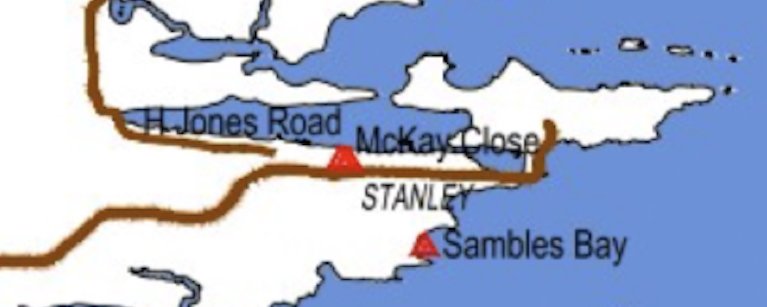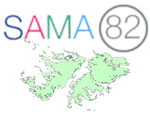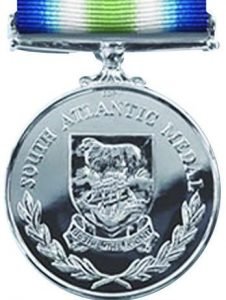
Dedicated to the memory of:

Lieutenant Colonel
Herbert Jones VC OBE
2nd Battalion The Parachute Regiment
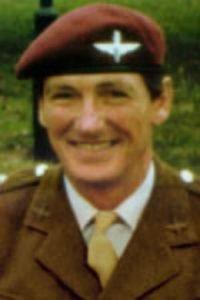

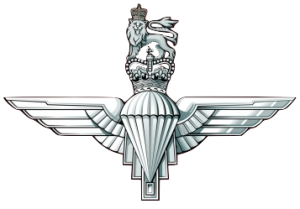
The eldest of three sons, ‘H’ – as he was always known to both his family and friends – was born in London on 14 May 1941. He was educated at Eton College between September 1953 and 1958, moving on from there to the Royal Military Academy at Sandhurst. Passing out from the Academy in 1960, he gained a commission in the Devonshire and Dorset Regiment.
H served within that excellent county regiment in a variety of roles and operational theatres, gaining wide experience and proving, both in the field and in Staff HQ appointments, that he was an officer of the very highest calibre. In 1977 he went to Buckingham Palace to receive the MBE from Her Majesty the Queen in recognition of his outstanding service as Brigade Major of 3 Infantry Brigade; he went again in 1980 when made OBE for his work in UK Land Forces. To be awarded an MBE and then be promoted within the Order to Officer is unusually distinguished.
He then did something rather unusual in the career pattern of a British Army officer. Drawn to the robust, positive attitudes of the Airborne world, H transferred to the Parachute Regiment, and was appointed CO of the Second Battalion (2 PARA) in April 1981. Although not initially involved in the South Atlantic deployment, his intensive lobbying ensured that 2 PARA was very much in the OP CORPORATE planners’ minds.
In late April 1982 the Battalion embarked in the requisitioned P&O North Sea ferry MV Norland and deployed to the South Atlantic. 2 PARA subsequently landed at Red Beach, San Carlos in the early hours of Friday 21st May 1982. They deployed on and around the Sussex Mountains, before moving south to the Darwin isthmus for the assault on Goose Green, an Argentine-occupied settlement that threatened the flank of the British advance. During the course of that all-important battle (the first test of British resolve in retaking the Islands) H was hit by machine-gun fire as he pressed forward to restore his Unit’s battlefield momentum at a critical phase in the fighting.
He was not killed outright. Help was called for, and in a gallant attempt to evacuate the badly-injured CO of 2 PARA, Lieutenant Richard Nunn DFC Royal Marines was shot down in his Sioux helicopter. H was subsequently certified dead at Ajax Bay on 29 May 82 and interred there with the other sixteen dead on the following day, in a wonderful field burial service conducted by the Chaplain of 2 PARA, the Reverend David Cooper.
Later on, his body was exhumed from its temporary resting place above Ajax Bay, and then moved across San Carlos Water to the beautiful Port San Carlos war grave, where he now lies, along with Dick Nunn, and several other men of his Battalion.
H left a widow, Sara, who he married on the 20th June 1964. His two sons, Rupert and David, both followed their father into the Devon and Dorset Regt, although David has since left the Army. Tim, his younger brother, retired from the Royal Navy as a Commander in 1993. Sara leads a busy life as a Justice of the Peace, Chairman of the Falklands Families Association, Executive Councillor for the South Atlantic Medal Association (82) and Chairman of the British Legion Poppy Factory. She was appointed CBE in the 1996 Queen’s Birthday Honours List.
Text of the Reading Given at the Drumhead Service, Aldershot by Dr Rick Jolly OBE Chairman of SAMA82
Scene One: On the morning after, we pause and take stock. All the 64 wounded in the fight for Goose Green have survived and are now in the Hospital ship Uganda. It’s all down to their basic fitness, plus the wonderful work done by the RMO of 2 PARA, Captain Steve Hughes and his battlefield medic teams. What a tiger that young doc has been. 3 PARA are halfway across east Falkland on their long tab between Port San Carlos and Teal Inlet. They will be sweating – from their heavy loads, as well as worrying about that butcher’s bill which has had to be paid by their friends in this first real test of the Commando Brigade’s mission to regain the Islands. Their turn will surely come. The rumours concerning the numbers killed vary widely. All we know for certain is that the Commanding Officer has died at the head of his battalion.
Scene Two: A Naval helicopter arrives and settles gently onto the grass. The aircrewman beckons me forward, a look of real pain and resignation on his tired face. He is sharing the cabin with British dead – paratroopers from Goose Green. The bodies have been loaded in on top and alongside each other, their limbs frozen in rigor mortis, and each man’s combat smock or poncho cape pulled up over his face. Silently, sadly, we unload the bodies, placing each corpse on its own stretcher at the side of the Ajax Bay main building. The RSM of 2 PARA, Mr Malcolm Simpson, and a lightly injured company commander, Major Roger Jenner, help us in this task. The two men then stand back, quietly, near to tears, watching us. My little team of volunteer Royal Marines and I prepare the bodies, one by one – for burial. A journalist hovers in the background, obviously thinking about a photograph. Our thunderous looks indicate that production of a camera will result in him joining our waiting customers. I tell one of the boys to keep him – and any other outsiders – well away. The cold, wet clothing is deftly cut off. The pockets are examined, and a few personal possessions sorted, logged and put in a plastic bag. With the body stripped naked in the freezing air, I carefully examine each man to confirm his identity, and then – to certify both death and its primary cause. They have died in a fight to uphold Her Majesty’s sovereignty. They have died on British soil, and British law applies. To save the need for any later examination of the bodies by a Coroner, I must do the job properly now. Those names are burned into our memories: Dent, Bingley, Cork, Hardman, Melia, Illingsworth, Mechan, Wood, Findlay, Barry, Dixon, Fletcher, Prior, Smith, Sullivan, Holman-Smith, and finally, ‘H’ himself. That same shy, almost quizzical smile lies on his face as easily in death as it did in life.
Like his men, the late Commanding Officer of the Second Battalion is lifted carefully and placed into an opaque, loose shroud. Gently and reverently, his body is then placed in the thick grey PVC body bag, with its heavy zip and carrying loops. Chief Petty Officer Scouse Davies writes each name on the outside using a broad felt-tip pen, big black capital letters contrasting sharply with the shiny grey of the bag.
We straighten up, our backs aching from an hour’s crouching and our bloodied fingers stiff with cold. The RSM looks me in the eye and salutes. It has not been a pleasant task by any means, but it has been an honour for us to undertake. We feel satisfied and glad that some sort of dignity has been restored to these brave men.
Scene Three: The funeral itself is also a fierce event. Goose Green must be defended against counter-attack, and there are friends back there who cannot be spared from duty for this service. On their behalf, nearly two hundred men stand in silence around the edge of the mass grave, heads uncovered, the majority with hands clasped loosely in prayer. Officers mix with soldiers, Paras with Royal Marines. Above us is the dome of a perfectly blue sky, while in the distance, snow gleams on the summit of Mount Simon. San Carlos Water is flat calm, the fleet lying still as the helicopters move busily from ship to ship with their loads, like bees on a summer’s day. The snarl of their engines and clatter of rotor blades carry for miles in the crisp cold air. It is a beautiful spot, this carefully chosen, silent hillside.
One by one, the bodies are carried down into the grave. Eleven of the seventeen being buried today are officers or NCOs, showing exactly what Airborne Forces and Commandos mean by the word ‘leadership’. Each body bag has six canvas handles, so the burial party consists of six men of similar rank to the deceased, plus one more senior escort. Major Chris Keeble, Acting CO of 2 PARA, precedes the four dead officers; RSM Simpson acts for the NCOs and private soldiers. A Sapper Major leads the group bearing Corporal Melia; Major Peter Cameron and six brother Royal Marine pilots carry Lieutenant Dick Nunn to his place of rest. Each body bag is covered by the Union Flag, which is removed when the precious load is in position. When all are in place, the 2nd Battalion Padre, David Cooper, begins the service. As his firm voice rolls through the now-familiar words, the emotional pressure winds up to a crescendo. Eyes that were red with tiredness and strain now brim over with silent tears that splash down onto the soggy earth.
‘Ashes to ashes, dust unto dust…’
The sound of handfuls of earth cast by the RSM onto taut body bags echoes like thunder around the grave. Led by Major General Moore, we salute our friends in a final, reluctant, farewell – then we turn, and walk away…

MINISTRY OF DEFENCE
HONOURS AND AWARDS
ARMY DEPARTMENT
MONDAY, 11th OCTOBER 1982
The QUEEN has been graciously pleased to approve the Posthumous award of the VICTORIA CROSS to the undermentioned in recognition of gallant and distinguished service during the operations in the South Atlantic:
Lieutenant Colonel Herbert JONES O.B.E. (465788), The Parachute Regiment
On 28th May 1982 Lieutenant Colonel JONES was commanding 2nd Battalion The Parachute Regiment on operations on the Falkland Islands. The Battalion was ordered to attack enemy positions in and around the settlements of Darwin and Goose Green
During the attack against an enemy who was well dug in with mutually supporting positions sited in depth, the Battalion was held up just South of Darwin by a particularly well-prepared and resilient enemy position of at least eleven trenches on an important ridge. A number of casualties were received. In order to read the battle fully and to ensure that the momentum of his attack was not lost, Colonel Jones took forward his reconnaissance party to the foot of a re-entrant which a section of his Battalion had just secured. Despite persistent, heavy and accurate fire the reconnaissance party gained the top of the re-entrant, at approximately the same height as the enemy positions. From here Colonel Jones encouraged the direction of his Battalion mortar fire, in an effort to neutralise the enemy positions. However, these had been well prepared and continued to pour effective fire onto the Battalion advance, which, by now held up for over an hour and under increasingly heavy artillery fire, was in danger of faltering
In his effort to gain a good viewpoint, Colonel Jones was now at the very front of his Battalion. It was clear to him that desperate measures were needed in order to overcome the enemy position and rekindle the attack, and that unless these measures were taken promptly the Battalion would sustain increasing casualties and the attack perhaps even fail. It was time for personal leadership and action. Colonel Jones immediately seized a sub-machine gun and calling on those around him and with total disregard for his own safety, charged the nearest enemy position. This action exposed him to fire from a number of trenches. As he charged up a short slope at the enemy position he was seen to fall and roll backward downhill. He immediately picked himself up, and again charged the enemy trench, firing his sub-machine gun and seemingly oblivious to the intense fire directed at him. He was hit by fire from another trench which he outflanked and fell dying only a few feet from the enemy he had assaulted. A short time later a company of the Battalion attacked the enemy who quickly surrendered. The devastating display of courage by Colonel Jones had completely undermined their will to fight further
Thereafter the momentum of the attack was rapidly regained, Darwin and Goose Green were liberated, and the Battalion released the local inhabitants unharmed and forced the surrender of some 1,200 of the enemy
The achievements of 2nd Battalion The Parachute Regiment at Darwin and Goose Green set the tone for the subsequent land victory on the Falklands. They achieved such a moral superiority over the enemy in this first battle that, despite the advantages of numbers and selection of battle-ground, they never thereafter doubted either the superior fighting qualities of the British troops, or their own inevitable defeat
This was an action of the utmost gallantry by a Commanding Officer whose dashing leadership and courage throughout the battle were an inspiration to all about him.
Family and friends are encouraged to contribute.
We will add information to this memorial as we receive it.
If you have a photo, an anecdote, or simply to say you remember him, we will be very pleased to hear from you, so please contact the sama office at [email protected]
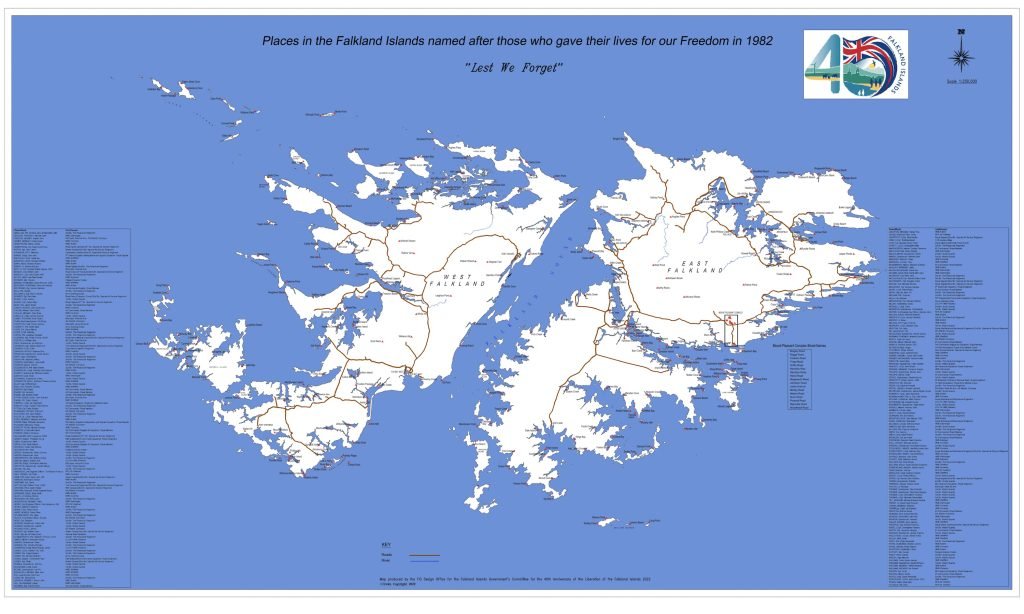
In 2022, as part of the 40th Anniversary commemorations, geographical features were identified and named after the fallen of 1982. H JONES ROAD can be found in Stanley.
It is in position
51° 41′ 44.09″ S, 057° 50′ 37.38″ W
H was also chosen to have a street named after him at the Mount Pleasant Complex (MPC). MPC is the base for British Forces South Atlantic Islands (BFSAI). JONES AVENUE is located at
51° 49′ 58.79″ S, 058° 27′ 25.99″ W
